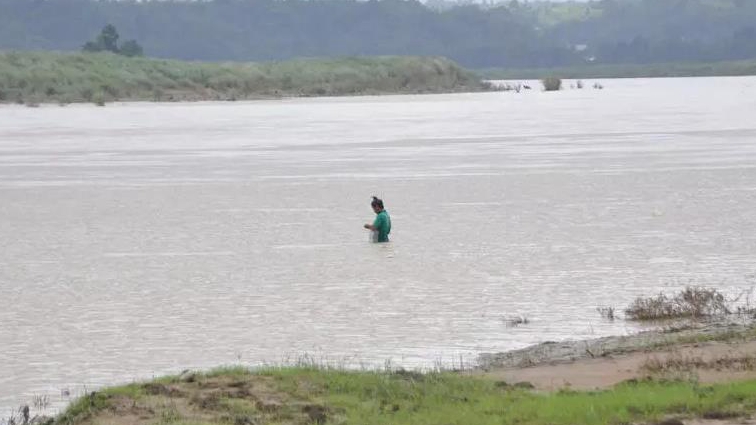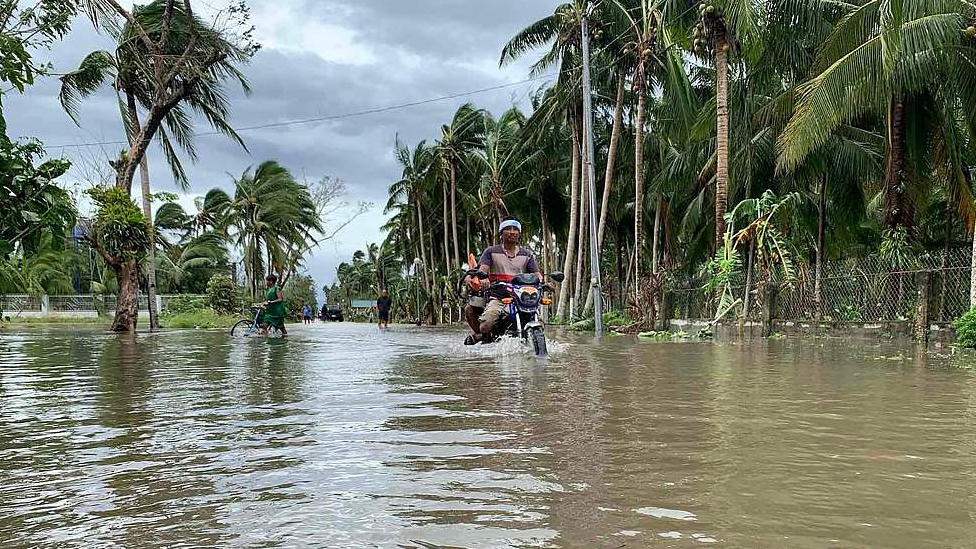
A man fishes in a swollen river caused by heavy rains north of Manila, ahead of Typhoon Goni's landfall in the Philippines. /AFP
A man fishes in a swollen river caused by heavy rains north of Manila, ahead of Typhoon Goni's landfall in the Philippines. /AFP
More than 200,000 people in the Philippines were ordered to evacuate Saturday as the most powerful typhoon of the year so far barrels towards the country, with authorities warning of "destructive" winds and storm surges.
Typhoon Goni is expected to graze the southeastern tip of the main island of Luzon early Sunday before making landfall in the afternoon with wind speed of up to 205 kilometers per hour, according to the state weather forecaster.
It comes a week after Typhoon Molave slammed into the same region, killing 22 people and flooding low-lying villages and farmland, before sweeping across the South China Sea to Vietnam.
Schools which have been empty since the start of the coronavirus pandemic will be used as emergency shelters as well as government-run evacuation centers and gymnasiums.
"It looks like we will have really strong winds, increasing the chances of widespread flooding and landslides," said Mark Timbal, spokesperson for the National Disaster Risk Reduction and Management Council.
"Storm surges are imminent on our east coast. We are monitoring Mayon and Taal volcanoes for possible volcanic mud flows."

A man drives on a flooded street in Oriental Mindoro, October 26, 2020. /CFP
A man drives on a flooded street in Oriental Mindoro, October 26, 2020. /CFP
Authorities on Saturday ramped up preparations in the Bicol region southeast of Manila, marshaling rescue vehicles, emergency response teams and relief goods ahead of the typhoon.
The weather service has warned of a "moderate to high risk" of storm surges up to three meters high along the eastern coast over the next two days.
"Violent winds and intense rainfall" are expected, possibly triggering flooding and landslides in a region of more than 20 million people, it said.
"Evacuating people is more difficult at this time because of COVID-19," said regional civil defense spokesperson Alexis Naz.
A maximum of five people will be allowed to shelter in a single school room that previously would have held 16, Naz said, adding that the natural disaster-prone region had enough facilities.
The Philippines is hit by an average of 20 storms and typhoons every year, which typically wipe out harvests, homes and infrastructure, keeping millions of people perennially poor.
Its deadliest on record was Super Typhoon Haiyan, which unleashed giant waves on the central city of Tacloban, leaving more than 7,300 people dead or missing in 2013.
(With input from AFP)